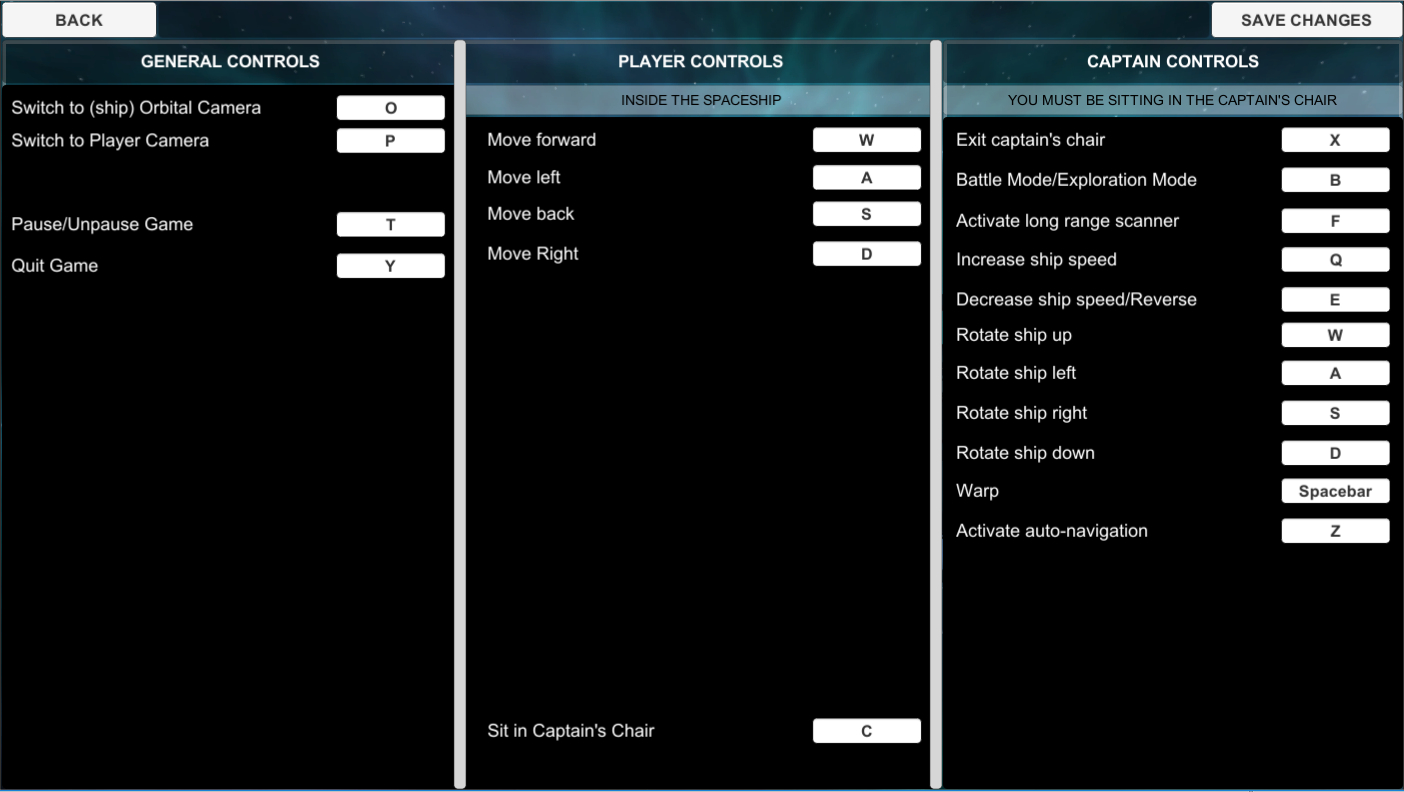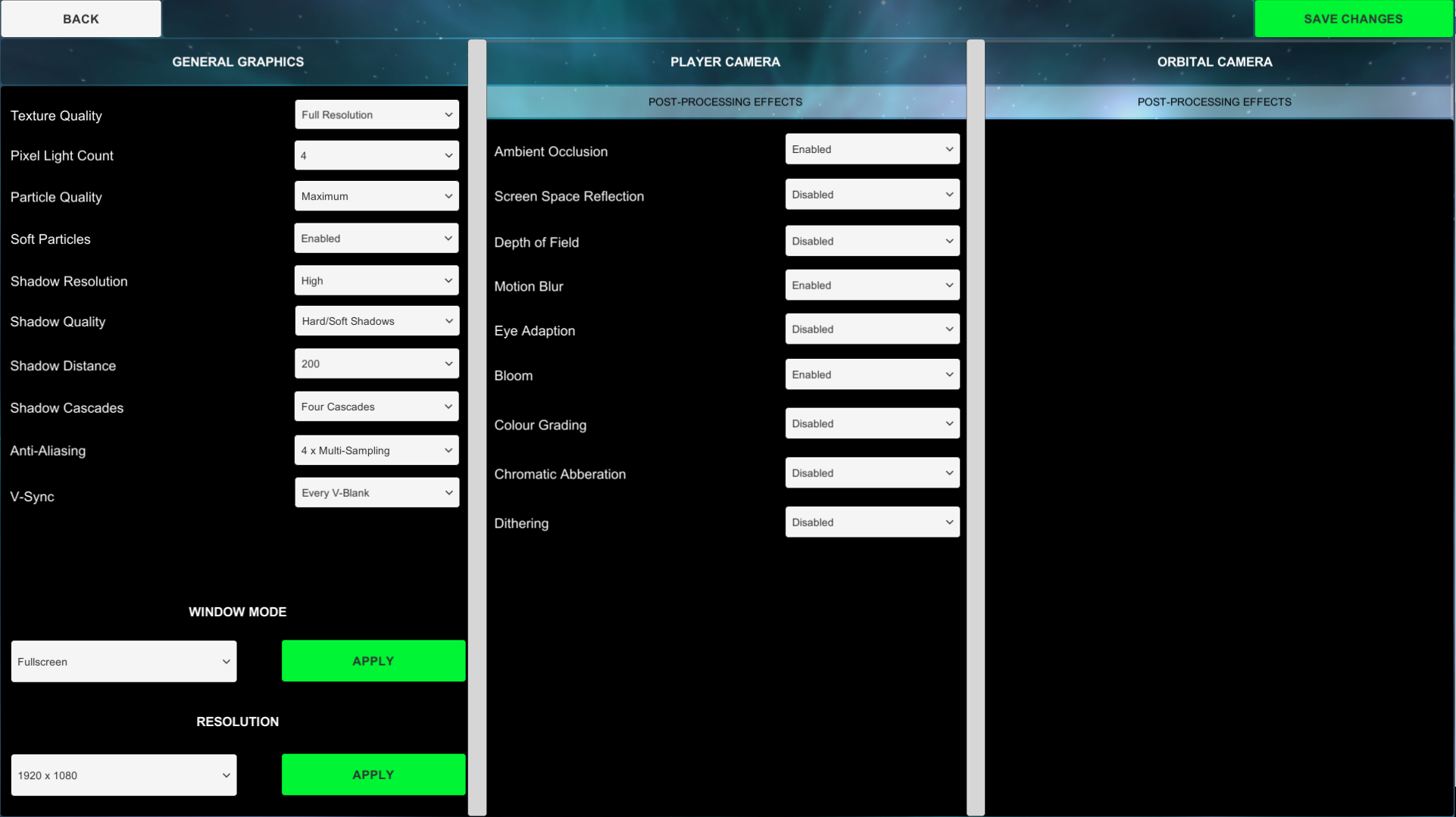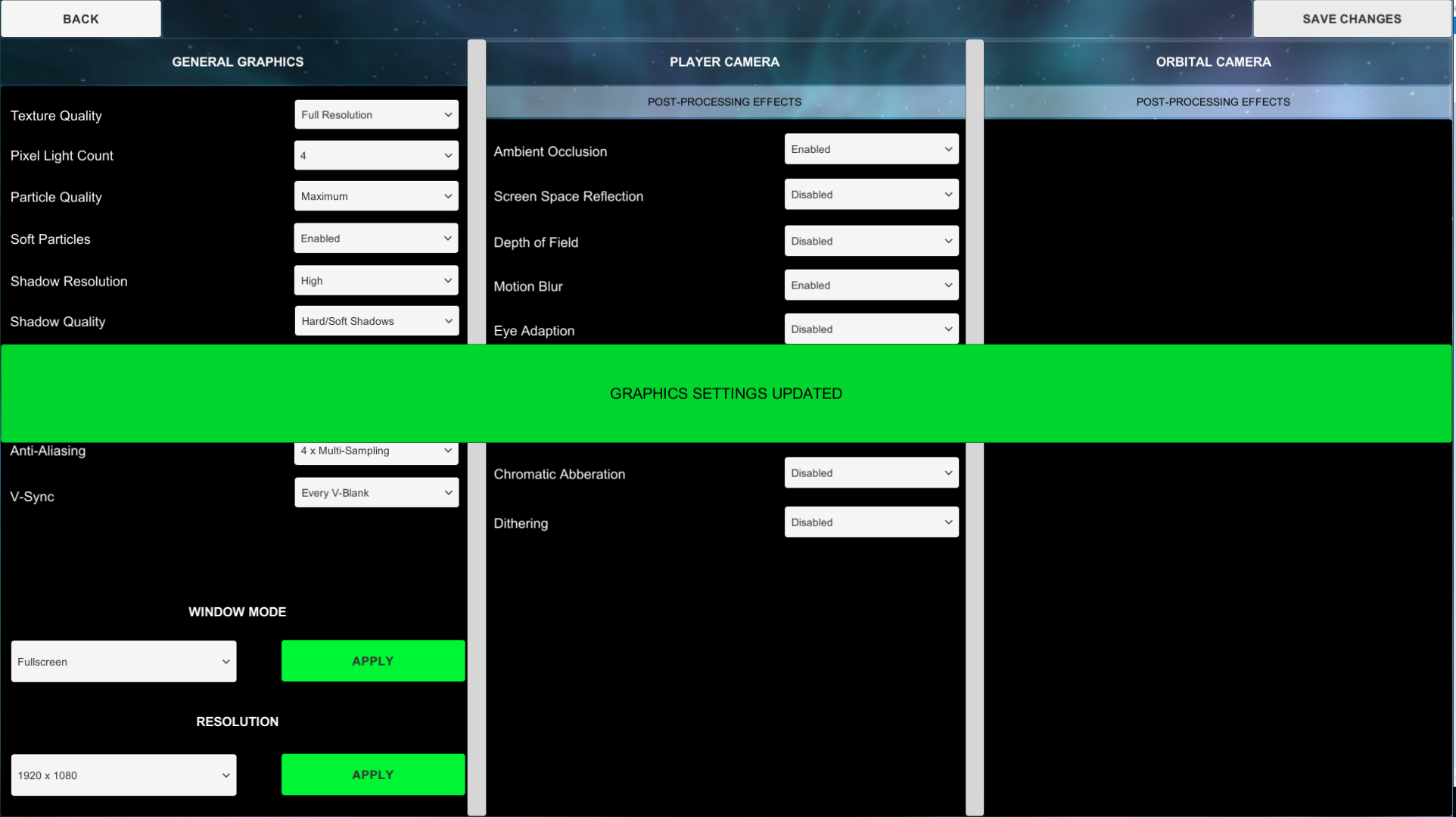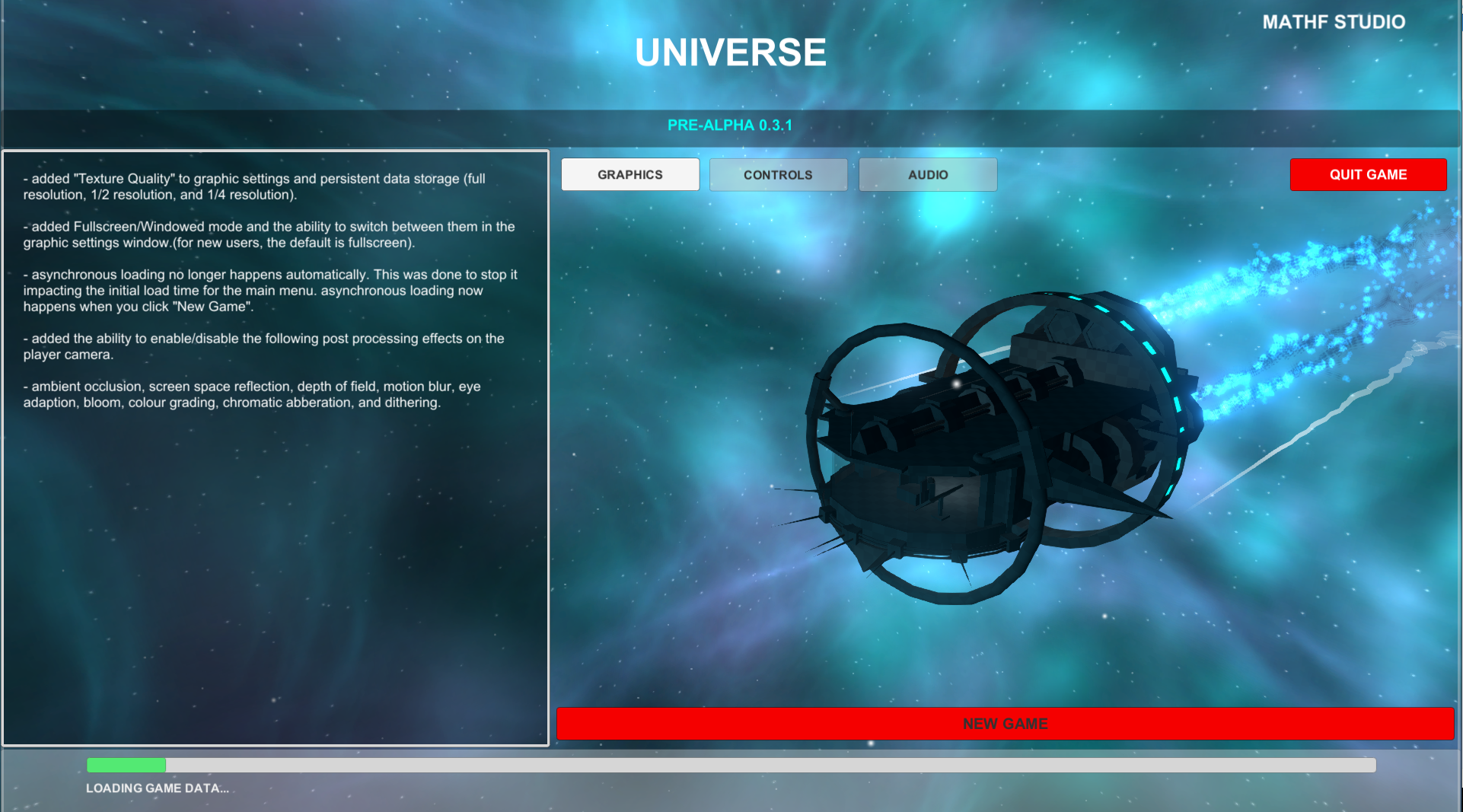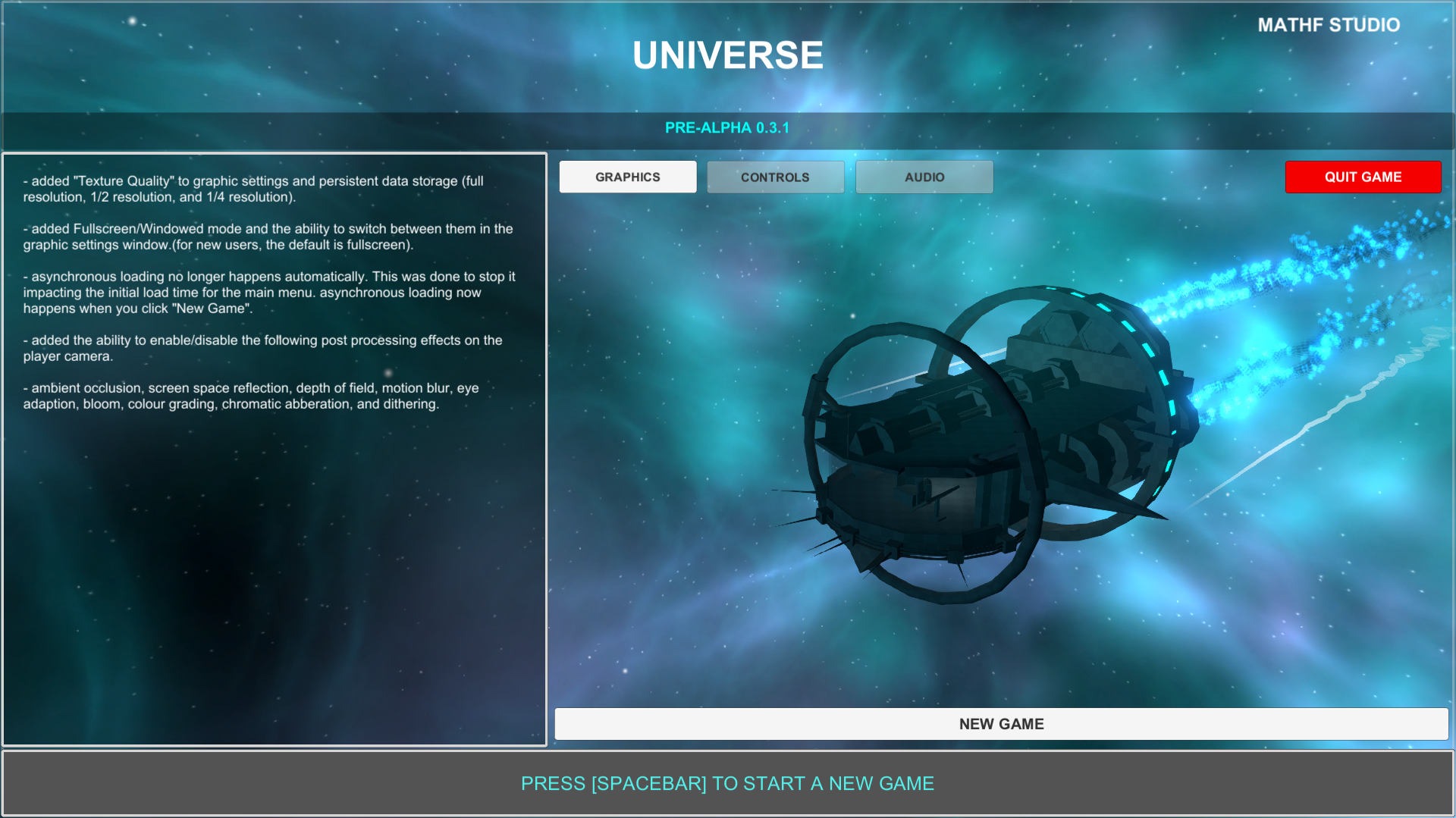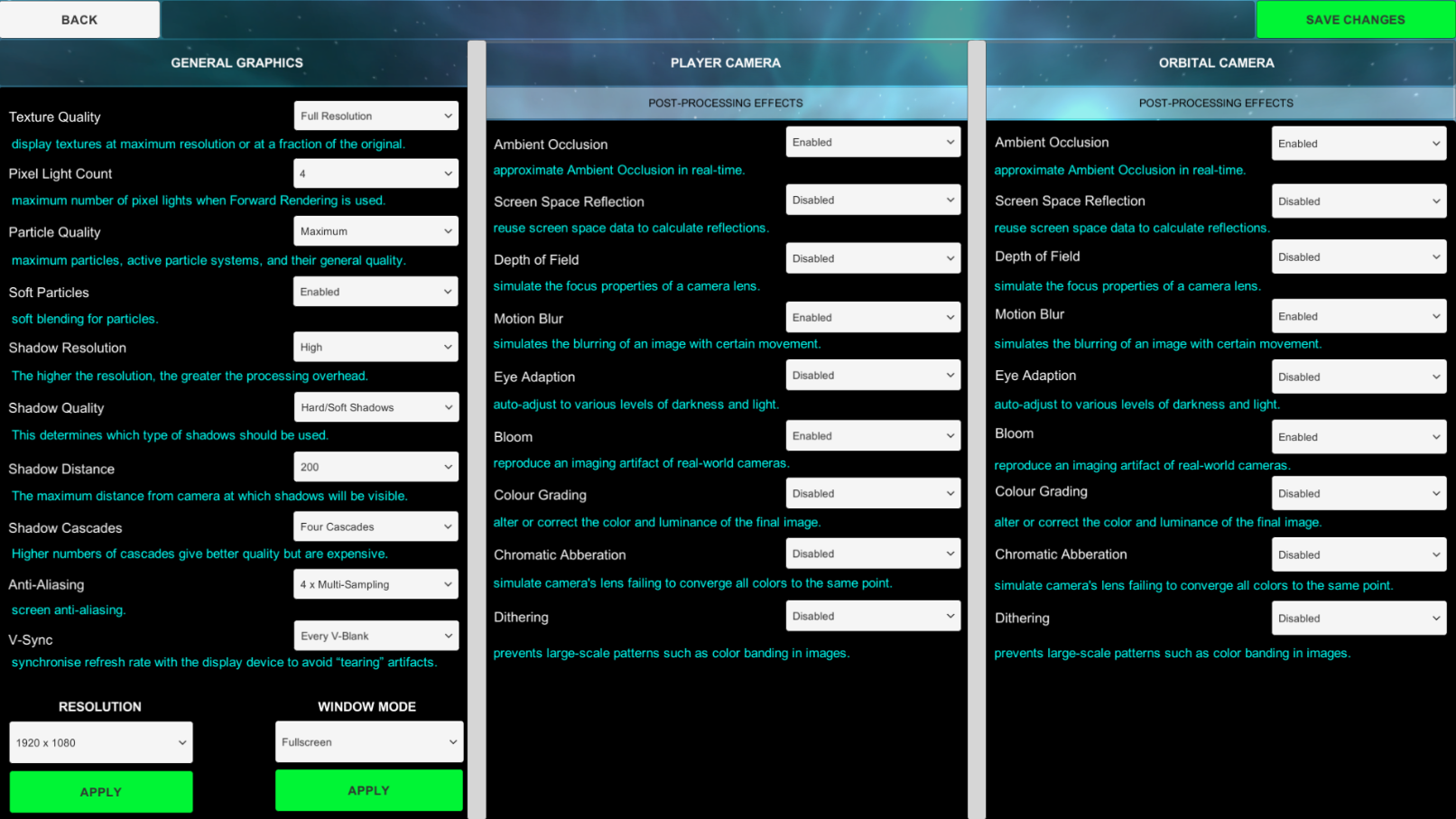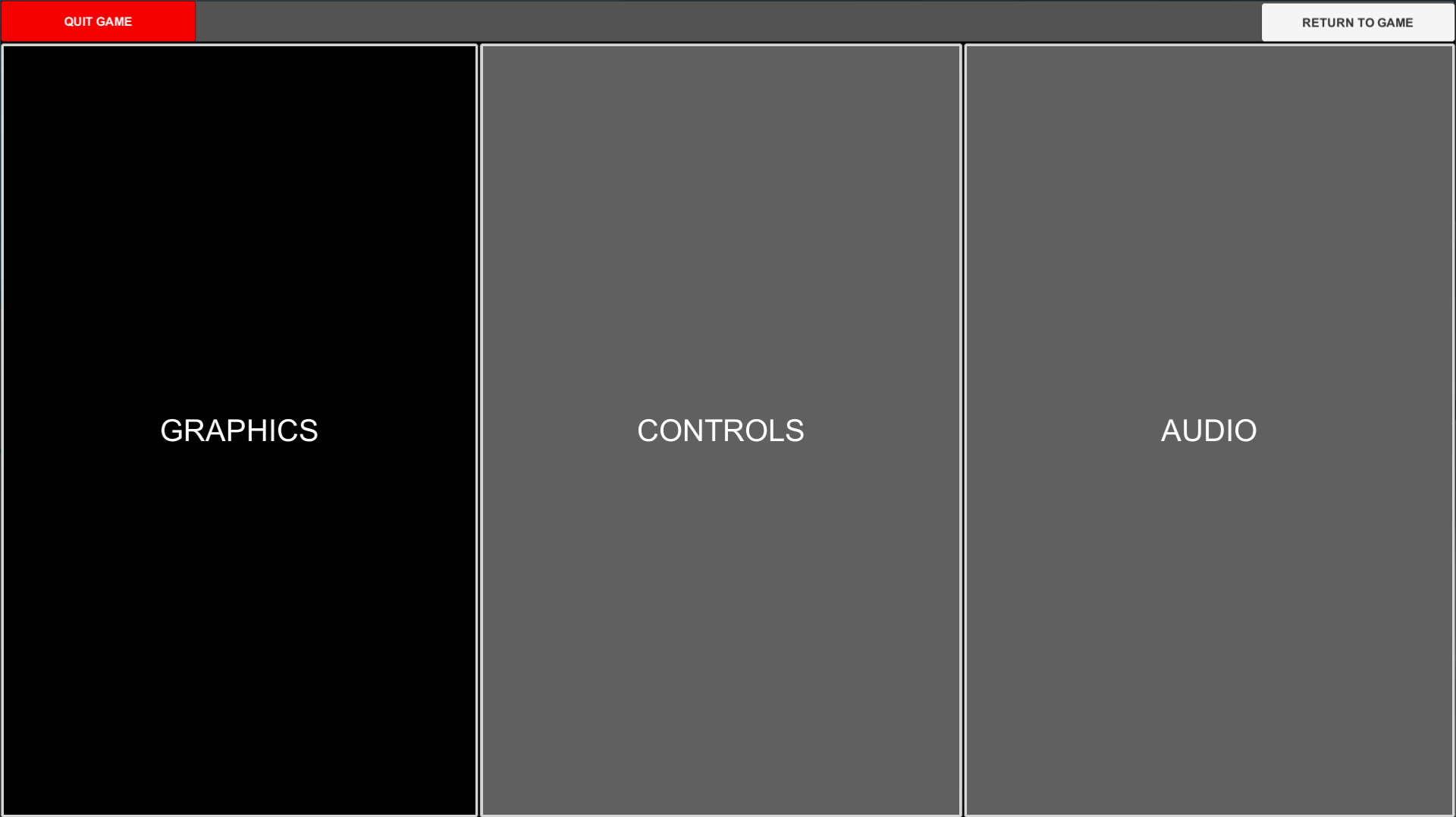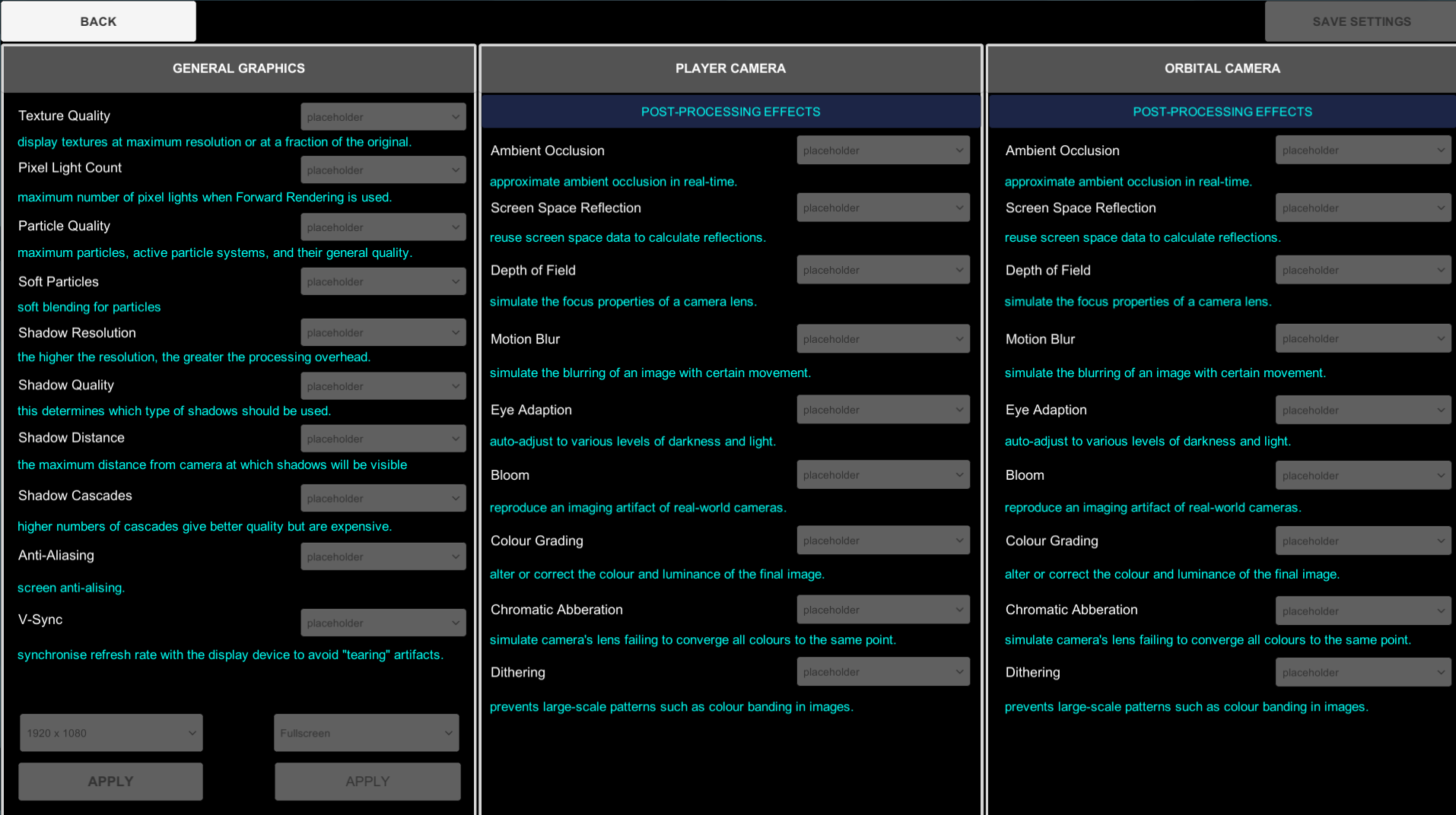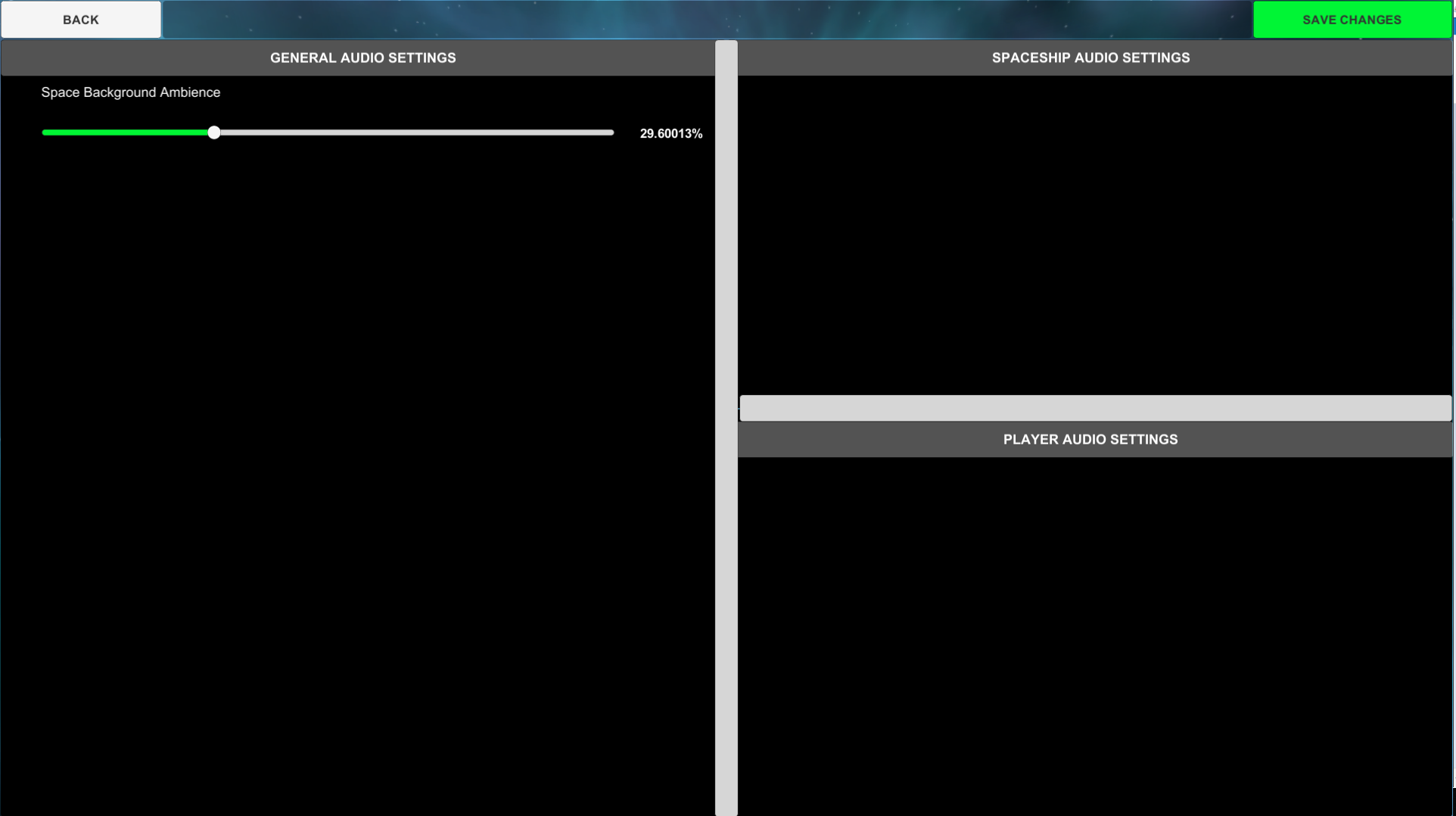https://mathf-studio.itch.io/universe
Explore a hand-crafted universe, battle space pirates (or become one!), land on planets, moons and other large entities, leave your ship and explore areas by foot, or just blow everything up.
There's three people working on the project (we all have regular jobs) with varied experience in different areas. We're new to working as a team so this gives us a chance to develop a solid asset pipeline.
Pre-Alpha 2.9.0
The new main menu of the latest release (released a few hours ago)
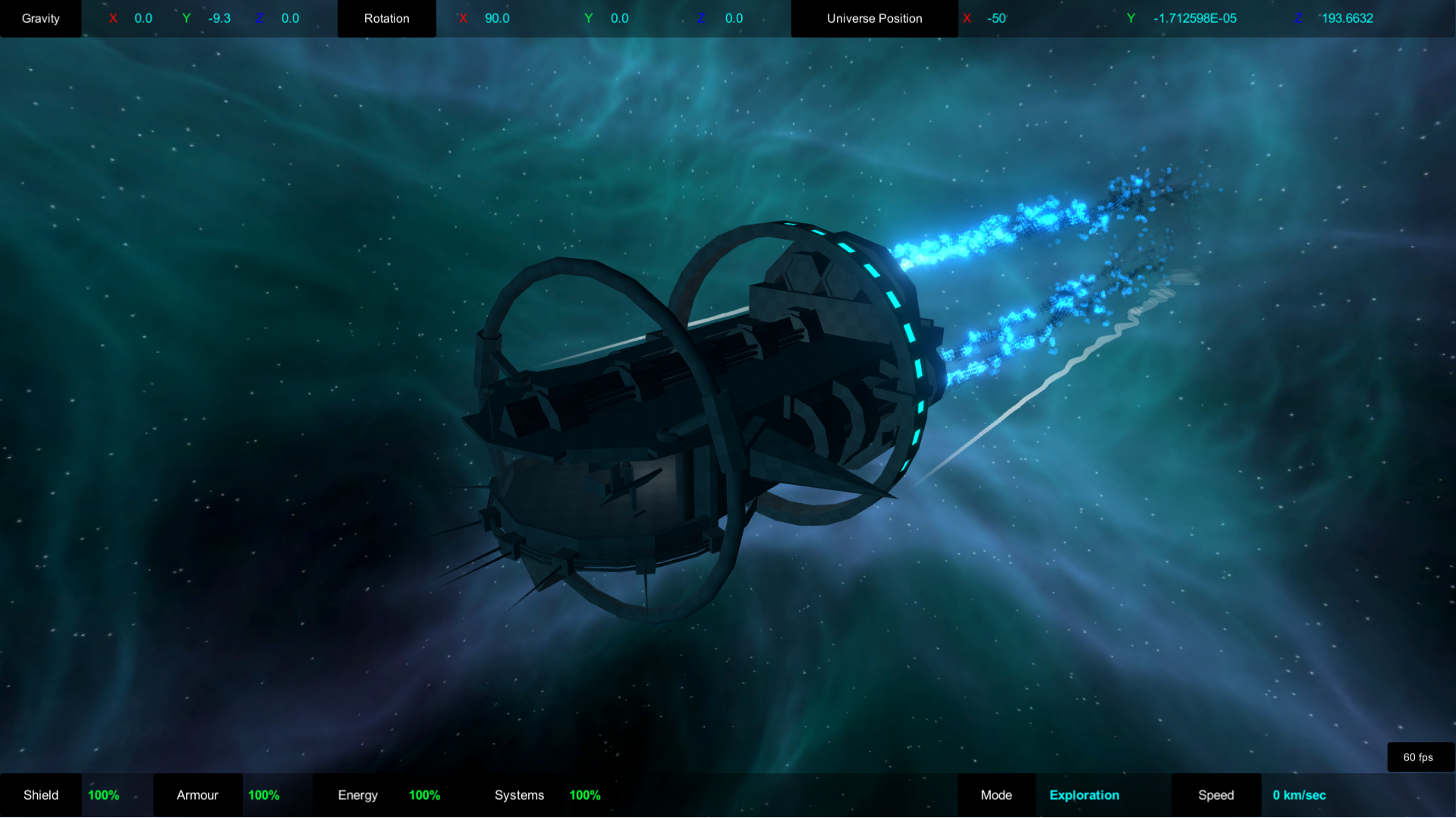
Spaceship Mode is a mechanic that allows you to switch between "Battle" and "Exploration" mode. Each mode having pros/cons. There is a 4 minute cooldown between switching modes for obvious reasons. (The shield generator switches between Cyan and Red to indicate the ship mode)
Switching back to Exploration mode (switching between modes can be done both when using the orbital camera and when using the player camera). 
Long Range Scanner Mechanic. This has been the most recent development task as it was quite a difficult one to do. 1) we developed a rough working raycast system 2) we made the distribution even 3) custom particle system to make it look nice.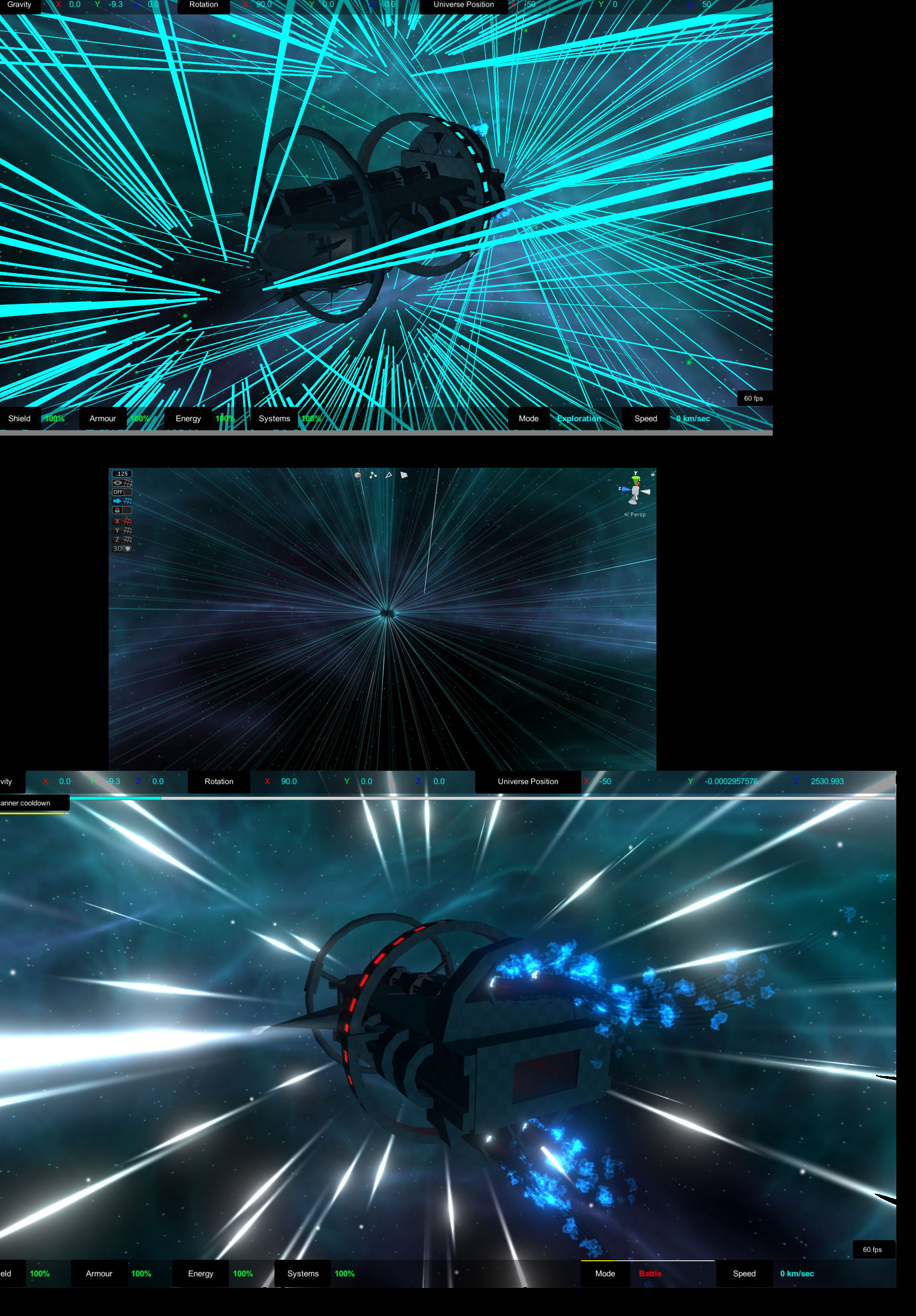
The view as a player when using the long range scanner (there is a 2 minute cooldown between scans.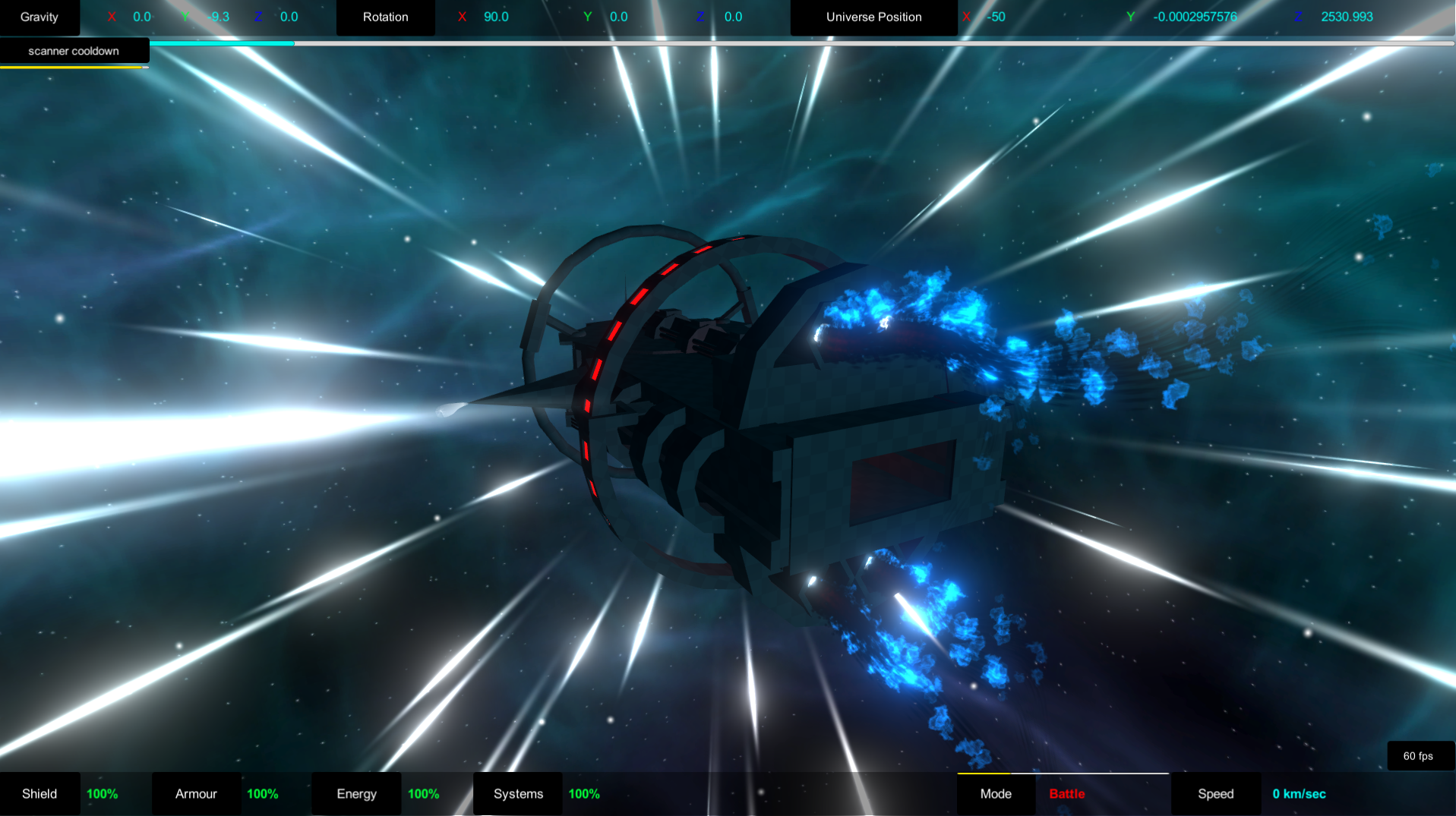
The lighting inside the ship was also changed to reflect the ship mode. (Red in battle mode and white in exploration mode)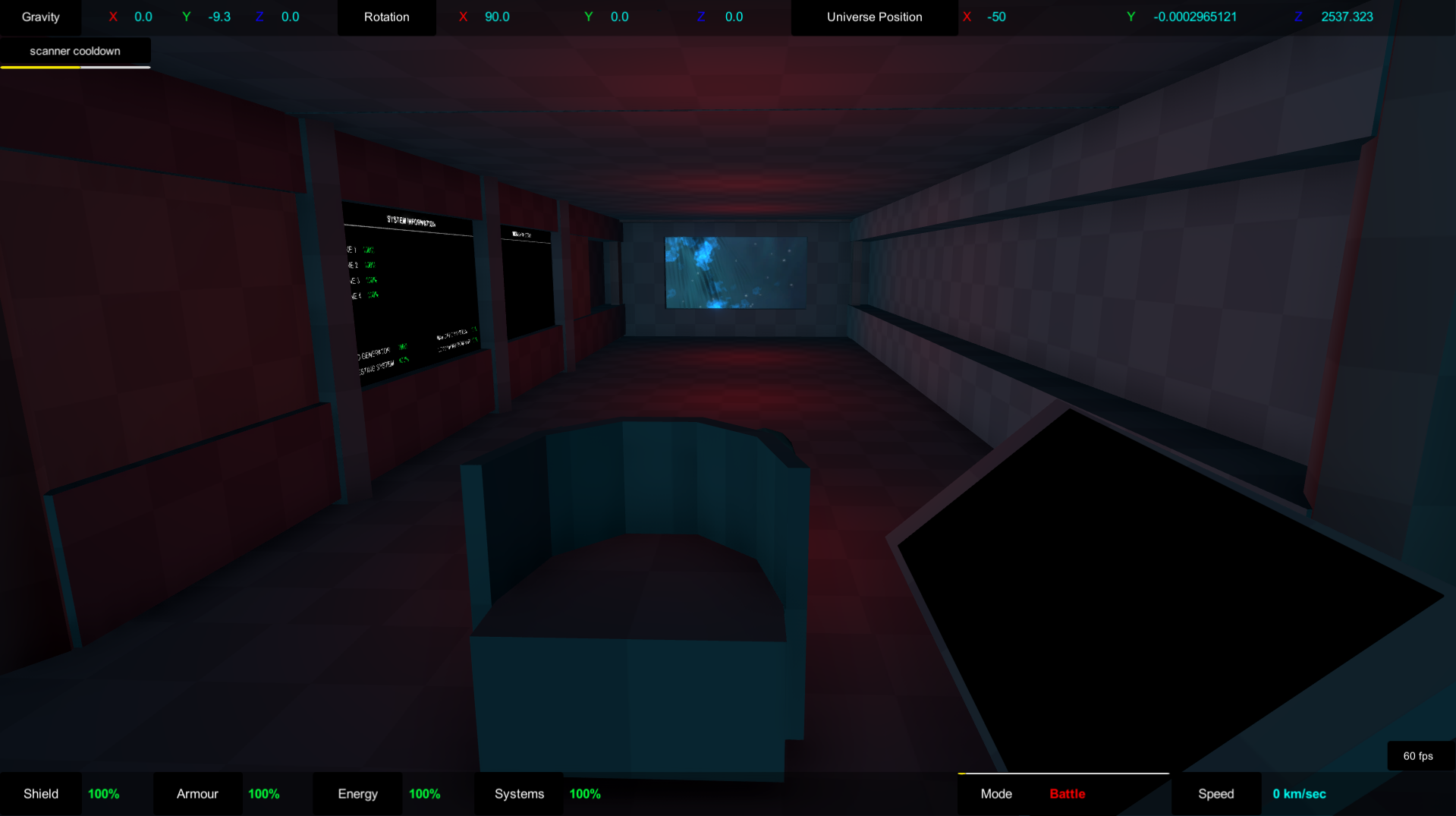
There has been a lot of background optimisation for the various particle systems as they are the heaviest on resources.
We've got a partially working system that attempts to compensate when dropping frames, and will temporarily lock to 30 until it can get back to 60 without any issues. (This will all be available to enable/disable via the main menu).


